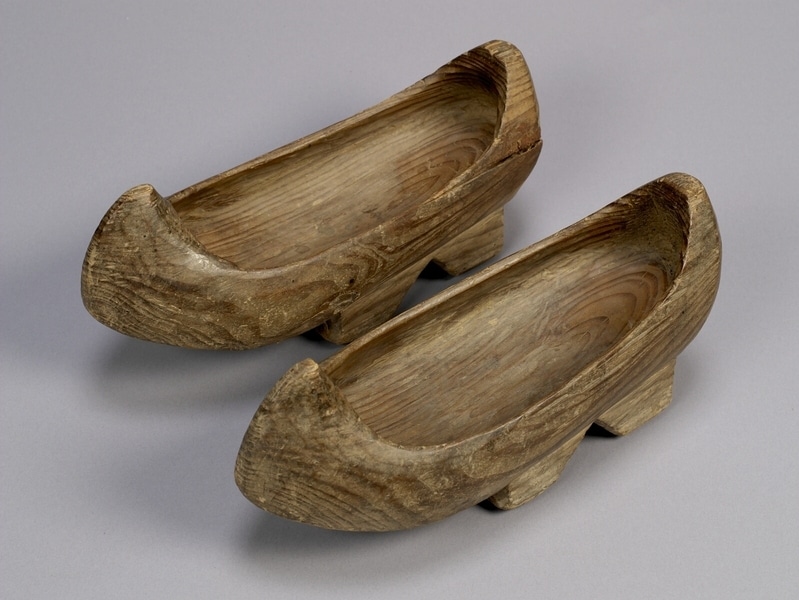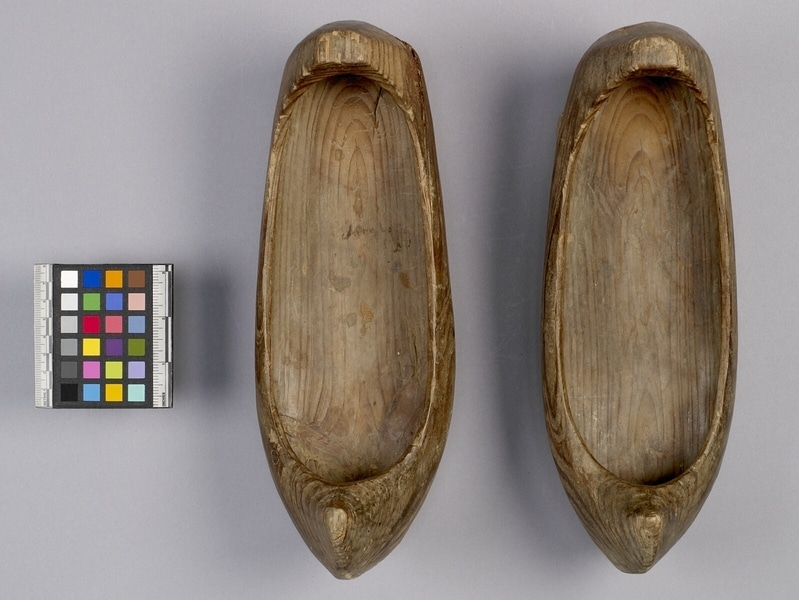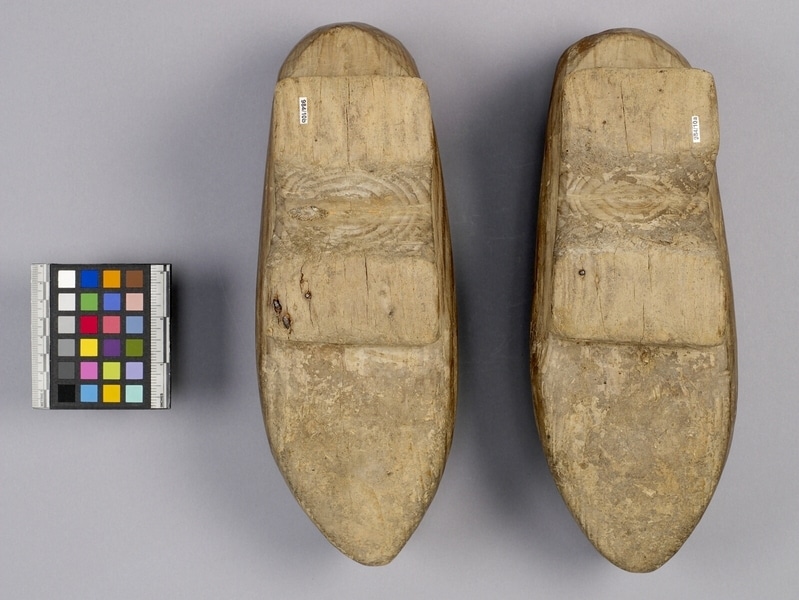Rain Shoes Item Number: 984/10 a-b from the MOA: University of British Columbia



Description
Pair of shoes each carved from a single piece of grey-brown wood with pronounced grain. Each is raised on two heels with a v-shaped space between them positioned at the arch and the heel with iron nails in the front heel. The shoes have low, rounded sides. Heels are concave (from the inside) and extend upwards at the back. The toes curve upwards and end in a point.
History Of Use
Wooden shoes could be made of various hardwoods. They were made by masters, specialists in this work. Nails were used to prevent or repair splitting of the wood grain. The shoes were carved in this curved shape to reflect the shape of traditional Korean socks “Boson”, and because elegant upward curves are favoured in Korean culture.
Specific Techniques
Wooden shoes were worn by both men and women to keep their feet out of water and mud during rain. Some had lower platforms if they were just to be worn on muddy ground. Those for older people were also lower, to lessen the danger of falling. Shoes of this size were for men, who wore them during hard rain. Wooden shoes were not worn with Korean socks “Boson”. One special use of these shoes was by poor members of the official “Yangban” class, to show that the wearer was a pure person who was not concerned with wealth. They were not used if the wearer was on horseback or was walking a long distance, as they were too heavy. Wooden shoes made for children were sometimes coloured. By about 1890-1900 they were replaced with rubber shoes imported from Japan, although their use continued to some extent in rural areas.
Item History
- Made in Korea between 1800 and 1910
- Owned by Hi Soon Kim before August 7, 1984
- Received from Hi Soon Kim (Seller) and Unknown (Funding source) on August 7, 1984
What
Who
- Culture
- Korean
- Previous Owner
- Hi Soon Kim
- Received from
- Hi Soon Kim (Seller) and Unknown (Funding source)
Where
- Holding Institution
- MOA: University of British Columbia
- Made in
- Korea
When
- Creation Date
- between 1800 and 1910
- Ownership Date
- before August 7, 1984
- Acquisition Date
- on August 7, 1984
Other
- Condition
- fair
- Accession Number
- 0984/0010 a-b